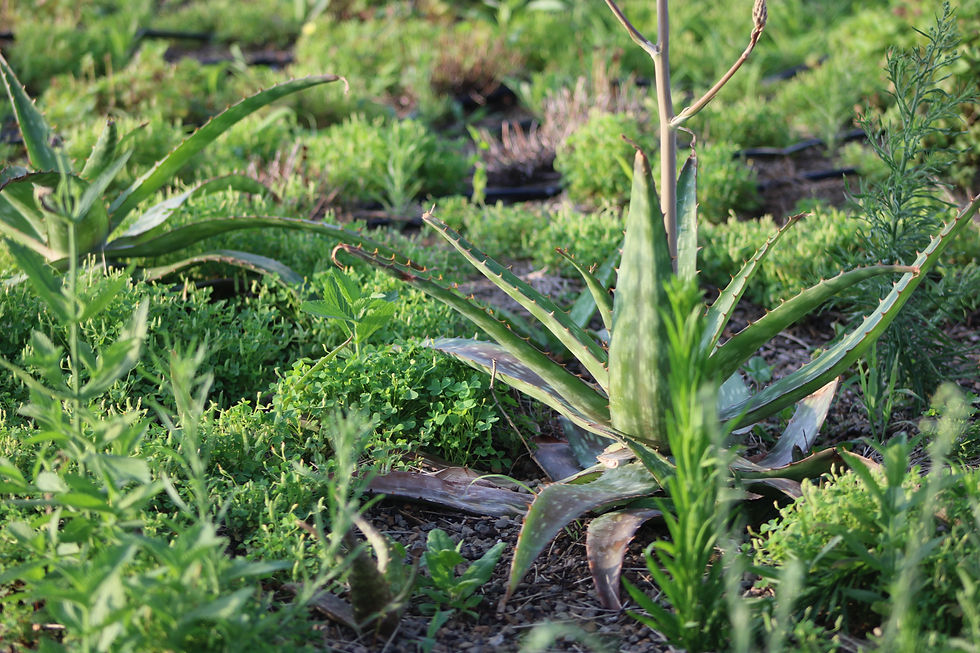A Welcome Winter Rest
- August Kind

- Jan 22
- 3 min read
Updated: Jan 23
This week in Houston, Texas we welcomed a near 4 inches of snow! A rarity for us, and a cause for panic given how freezes have gone in the past for Texans, though it seems the city has taken a collective deep breath.
At the Skyfarm, we are done with our first succession of things like arugula and radishes and preparing for the new rounds of lettuce, Swiss chard, mustard greens, and cabbages that are bound to emerge in the aftermath of frost and snow. While many around the city chose to cover their plants in frost cloth, something that we have done at the Skyfarm before, we made the conscious decision to leave everything as it was before. One of the struggles wintertime plants often have in Texas is that our temperatures rarely stay in the range that many of these plants desire to put on their full growth. Broccoli, cabbage, and mustard greens are great examples. Their seeds want soil to be 60 degrees Fahrenheit and need cold, crisp days and nights to put on their 'heads' or the bulb of their growth. Growing crops in the seasons they desire also means we are able to manage pest populations in accordance with nature's systems. Aphids that crave the sap from crops such as broccoli and kale are killed off in the intense cold and, free from the pressure of pests, these winter crops put on new growth in the months after freezes, just in time to bloom with the warmer weather. When our lettuce, kale, broccoli, and other crops begin to bloom, we will save their seeds if they had a strong season in preparation for the next round of winter crops that will be planted in autumn. In doing this, we ensure the farm remains 'closed loop', essentially, we become more self sufficient in growing more of the resources we need for every season. Our current fennel crop has been planted from seed collected from the fields in May 2024, making this it's second season at the Skyfarm. What a marvelous thing!
Many of the plants at the farm are perennials and, as such, will come back from a freeze. The thyme, rosemary, oregano, lavender, chives, lemongrass, lemon balm, mint, asparagus, moringa, and day lilies all wait with bated breath for the temperatures to drop low enough that they are called to rest for the season. Slumbering until the call of warmer weather wakes them to put on their new round of growth so they are strong and well established by the time summer's brutal heat arrives.
Our annuals such as the broccoli, lettuce, mustards, onions, garlic, fennel, and cabbages are cheering beneath the soil, many as seeds, invigorated by the cold snap and ready to reach for the sun. A handful of other volunteer plants, that is to say plants we did not intentionally put on the farm, also spring up, excited by the cooler temperatures. At the Skyfarm, we have plenty of chickweed, violas, clover, and wood sorrel wandering across the fields, all welcome additions to the ecosystem. When we grow our produce in tune with the seasons and do not fight but rather work with our weeds, we find that we lose all the things we are meant to. We learn lessons in how to work with our conditions and how we can utilize the functions of nature to serve our farms and communities; if we care to look, our lives can be very similar! What does it mean to listen to your seasons and find what you are called to do? In this frosty, albeit sunny, weather, are you called to slumber like the lemongrass or sing like the lettuce?
Pictured: Volunteer fennel popping up from our hugelkultur where the old plants decompose; an overview of our Northeast field where we are growing fennel, lettuce, calendula, cabbages, and asparagus; a purple viola that has volunteered in the fields; our onion patch, planted during our Onion Open Farm Day lesson with participants, to be harvested in early summer 2025; the onion patch, now insulated with hay.












Comments